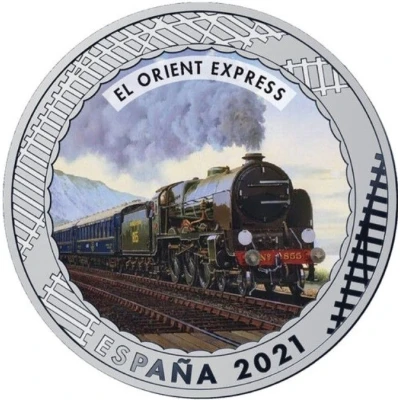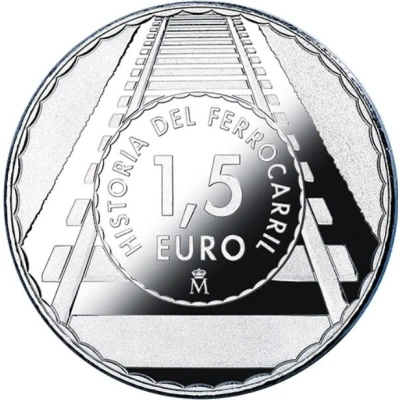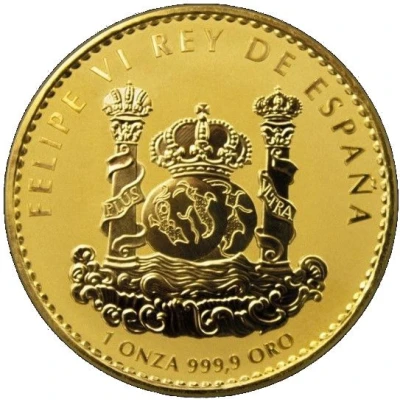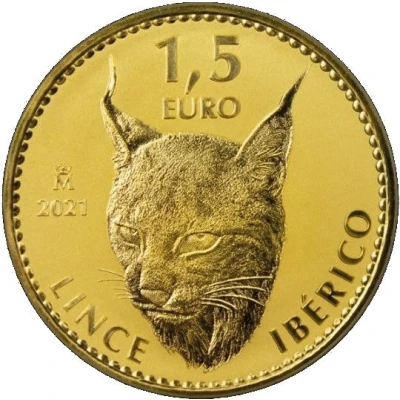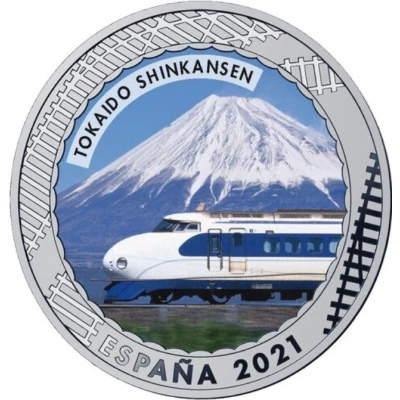
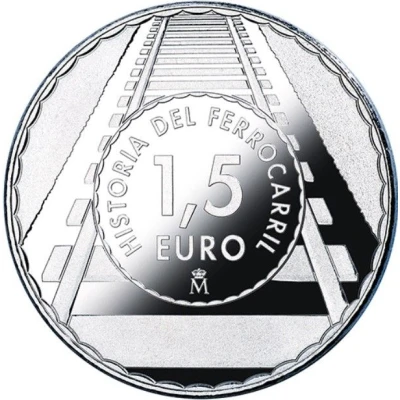

© Real Casa de la Moneda
1.5 Euro Tokaido Shinkansen
2021 year| Copper-nickel (75% copper, 25% nickel) | 15 g | 33 mm |
| Issuer | Spain |
|---|---|
| King | Felipe VI (2014-date) |
| Type | Non-circulating coin |
| Year | 2021 |
| Value | 1.5 Euro 1.50 EUR = USD 1.65 |
| Currency | Euro (2002-date) |
| Composition | Copper-nickel (75% copper, 25% nickel) |
| Weight | 15 g |
| Diameter | 33 mm |
| Shape | Round |
| Technique | Milled, Coloured |
| Orientation | Medal alignment ↑↑ |
| Updated | 2024-10-07 |
| Numista | N#320116 |
|---|---|
| Rarity index | 90% |
Reverse
Series and face value inside a central circle. Outside the central circle, an image of a railway track.
Script: Latin
Lettering:
HISTORIA DEL FERROCARRIL
1,5 EURO
M
Translation: History of railways
Edge
Plain
Comment
For the year 2021, since the European Year of the Rail and the 80th Anniversary of Renfe are celebrated, the FNMT-RCM issues a collection of 20 coins dedicated to the History of the Railways. This series reproduces a selection of trains and locomotives that have been relevant throughout its history.Tokaido Shinkansen: Japanese railways were the first to operate a high-speed train. High demographic density forced them to come up with a transport system that would increase mobility in a big way and fast. It stands to reason, therefore, that the site chosen to make this qualitative leap was the corridor running between the capital Tokyo and Osaka.
The radical differences in this train in respect of existing ones brought the need to build a new track which would be laid parallel to the traditional one. The gauge was the point where the two tracks differed most: 1.435 m as compared with 1.06 m. However, the changes entailed in the Shinkansen (New Line) went beyond those seen in the infrastructure, where, for instance, major engineering works were carried out in the construction of numerous viaducts so as to reduce the distance, which ended up at 200 km.
It would not be long before Western visitors started referring to the train as the Bullet, on account of its streamlined design. It was made up of 12 cars, each equipped with a continuous current traction engine associated to each axle, meaning that the number of cars and power could be increased at the same time. Such was the case in 1970, when the number of cars was increased to 16. Series 0 cars were 24.5 m in length; power was collected from overhead catenary (25 kV at 60 Hz); weight per axle was 16 tonnes; and the train could reach a top speed of 208 km/h.
Another novel feature was to be found in the signalling system in that, in fact, there were no signals. Instead, the engine driver was informed of track conditions by means of coded impulses transmitted by central conductors. The original car arrangements were divided electrically into six sets of two, each one complete with a buffet car. Another one was added when the number of cars was increased to 16. In the intermediate second-class sets, seating was arranged in a 3+2 formation, whereas in first-class or Green Cars, the arrangement was 2+2.
Interesting fact
The Tokaido Shinkansen 1.5 Euro coin from Spain features a unique design that showcases the iconic bullet train that connects Tokyo and Osaka in Japan. The coin's design is a nod to the train's sleek and modern design, with clean lines and a silver-colored finish that gives it a futuristic look. The coin's weight of 15 grams and copper-nickel composition make it a sturdy and high-quality collectible item.
Price
| Date | Mintage | VG | F | VF | XF | AU | UNC |
|---|---|---|---|---|---|---|---|
| 2021 M | 7000 | - | - | - | - | - | - |
Values in the table are based on evaluations by sales realized on Internet platforms. They serve as an indication only for 1.5 Euro (Tokaido Shinkansen) 2021 coin.
